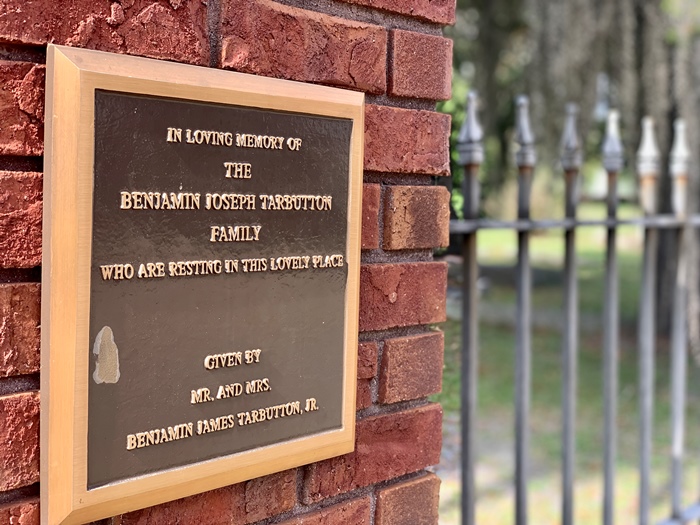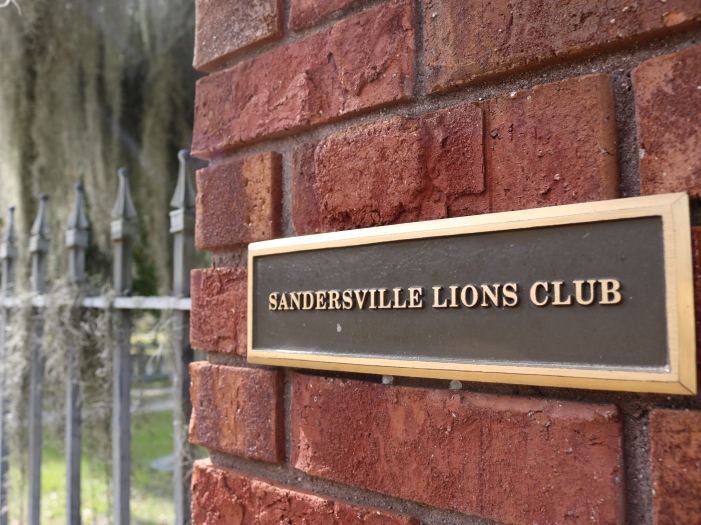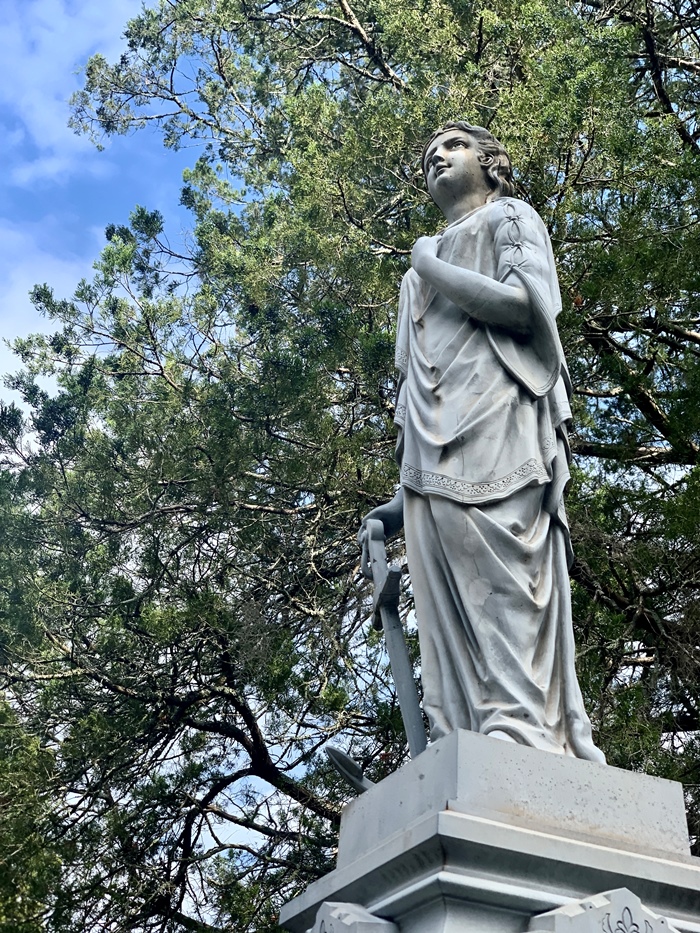Old city cemetery History
Click here for Cemetery Burial Information and Plot Map
The Old City Cemetery was first used as a cemetery in 1831 and the first documented burial was of Reuben B. Barney whose tombstone marker reads: "Sacred to the Memory of Reuben B. Barney who departed this life 10th Oct 1831 in the 27th year of his age. How short his passage to the peaceful home and unexpected was his earthly doom."
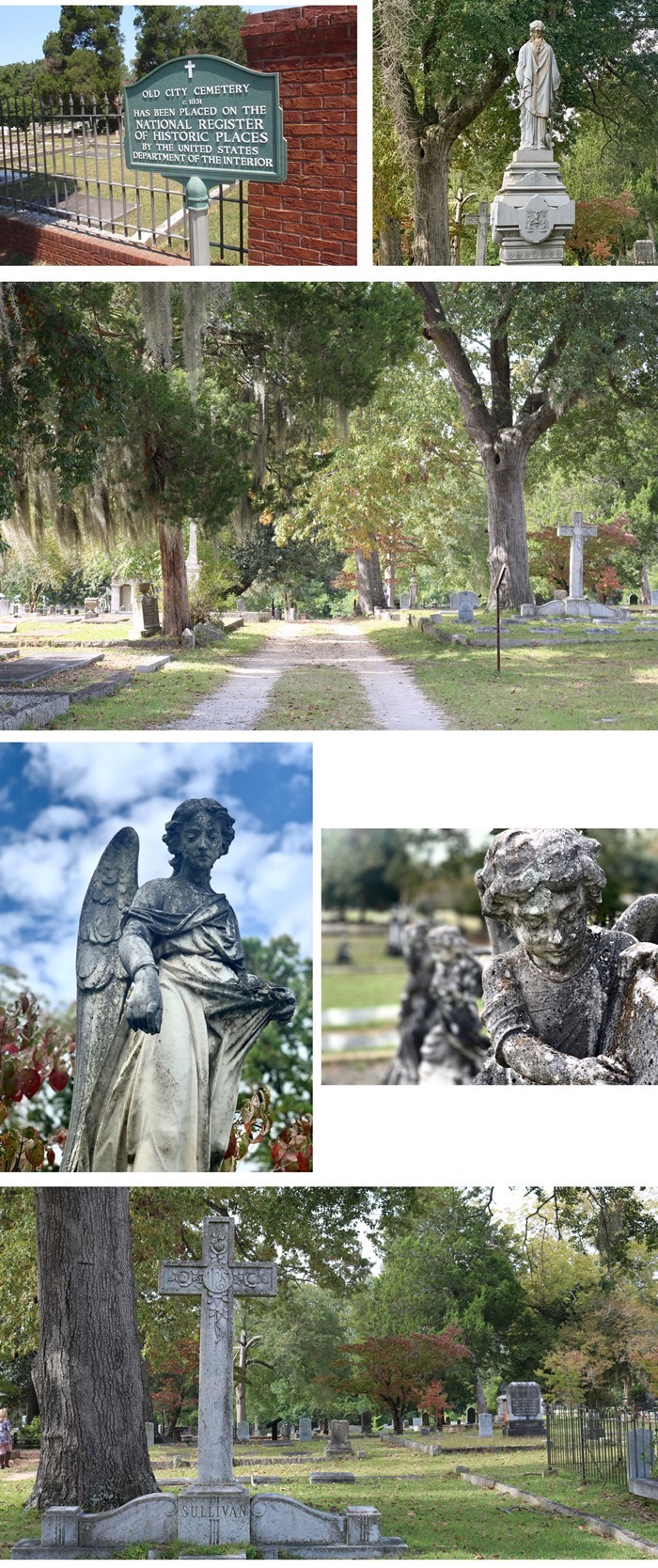 He appears to have been a person of some prominence. The Milledgeville Southen Recorder, a State paper, on July 14, 1831, recorded that Reuben B. Barney gave a toast at a 4th of July celebration in Sandersville. The Federal Union, another Milledgeville paper, reported on October 20, 1831, Mr. Barney died in Sandersville.
He appears to have been a person of some prominence. The Milledgeville Southen Recorder, a State paper, on July 14, 1831, recorded that Reuben B. Barney gave a toast at a 4th of July celebration in Sandersville. The Federal Union, another Milledgeville paper, reported on October 20, 1831, Mr. Barney died in Sandersville.
For 37 years burials continued in the first portion of the cemetery. Besides many unmarked graves, there are markers for Louisa A. Roughton (1853-1855), Dr. William P. Haynes, P.D.G.M. and P.D.G.H.P. (1797-1856), and Mary Green Youngblood (1834-1857). There is also a marker for David Greer, War of 1812, who died before 1849, but is thought to have been buried at his home, Washington Hall, near the Baldwin-Washington line.
The first church in Sandersville (George White, Statistics of the State of Georgia, 1849) was the Methodist (ME Church), which was built on a knoll adjacent to the original part of the cemetery by 1840, if not before. The church was used by all denominations. A new Methodist Church was built in 1859 (present site) and dedicated in 1860. The original Methodist Church structure remained in the Cemetery until October 14, 1875, and was used by Blacks as a school.
The original road from Sandersville to Milledgeville ran through the cemetery by the side of the Church or its location until 1912. The old roadbed is marked and can still be seen. Major Henry Hitchcock, a member of General William Tecumseh Sherman's staff, in Marching with Sherman (Yale University Press, New Haven, 1927) states:
"Sandersville, Georgia - In Camp, In open field - Saturday, Nov 26, 1864 - 11th day out
"Left camp by 6 1/2 AM--Wheeler's cavalry in our front, undertook to skirmish. Slocum's 1st Brigade advanced skirmishers and before long we heard their firing.
"General and staff rode forward -- road narrow for some distance and through pine woods and across low ground through which ran through creek. Road full of troops, wagons, camp followers, had to go slow. Rode with General and Slocum in ploughed field on right. Road full of advancing troops, in column by the flank. Ahead a quarter mile off at first one brigade deployed and advancing rapidly in line of battle. Ahead of them our skirmishers pressing forward at double quick with loud cheers to and into and through the town, pursuing Wheeler's men, and constant firing by skirmishers. It was not a battle, only skirmish firing, but that pretty rapid and constant for twenty or thirty minutes. We followed them into town, rebs not attempting to make stand. After driving them out of town our men halted there and at same moment entered it by N. road. As we entered town passed Church with "Grecian Front" and from a distance. cross road, saw a dead rebel lying on the portico. Learned after entering town that rebs fired from street corners, from behind houses, and from second story parapet front of brick Court House, which made quite a good fortification. All our loss I could learn was one killed, eleven wounded."
The cavalry skirmishing referred to took place in the cemetery and in the short half-block between it and the Courthouse square. The Union soldier listed as killed was identified in the August 22, 1966, issue of The Central Georgian, the Sandersville paper:
"In an editorial the ladies told of a Yankee soldier buried "under the eaves of the house" (old Methodist Church). His name, left by his brother, was John P. Brunson, 4th Tenn. Cavalry. It was suggested having his grave overbuilt with either brick or stone. There was a letter from his widow of Pulaski, Tenn., written Aug. 9, 1866 ... `I am thankful to the ladies for planting box around his grave, a soldier 400 miles from home. (Signed) Mary C. Brunson.'
This was later disputed by Brunson's family who was much incensed that a fine Confederate soldier had been called a Yankee. This grave is believed to be one of the brick cradles.
Major Hitchcock also records that Sherman burned the Courthouse in Sandersville and a few other buildings but no dwellings. Destroyed were early records of Washington County (Courthouse fires occurred in 1854 and 1855 also.)
"A NEW CEMETERY - The necessity for a new Cemetery has long been felt by the people of Sandersville. The old Grave Yard was badly located in the first place, and having been used as a burying ground for thirty or forty years, had become so crowded that scarcely a suitable vacant spot could be found for interment. The Town Council, we are glad to know, has purchased the vacant plot of ground adjoining the Parsonage lot, for a cemetery. A substantial fence will soon be erected around the ground, and the place otherwise rendered suitable for the purpose intended. We are also gratified to learn that it is not the intention of the town authorities to leave the old grounds in their present unprotected state; but that a suitable fence will also be placed around this sacred place where so many beloved fathers, mothers, brothers, sisters, children, and friends lie buried."
The area is adjacent to Virginia Avenue (once Cemetery Street) and Church Street and presently also joins the original part of the older cemetery seeming to be one site.
Also following this purchase are other references:
Central Georgian - "Willie (boy) Newman, son of Mark and Ann Ainsworth Newman, died March 1869 and was the first person buried in the new part of the cemetery."
Central Georgian - "January 5, 1870 We are glad to know that our considerate Town Council has donated to the different churches in Sandersville, a plot of ground in the New Cemetery, to be used as a ministers' burying place. Long may it present an unbroken sod, but be a monument to the generosity and proper consideration of the worthy gentlemen composing the Board of Councilmen."
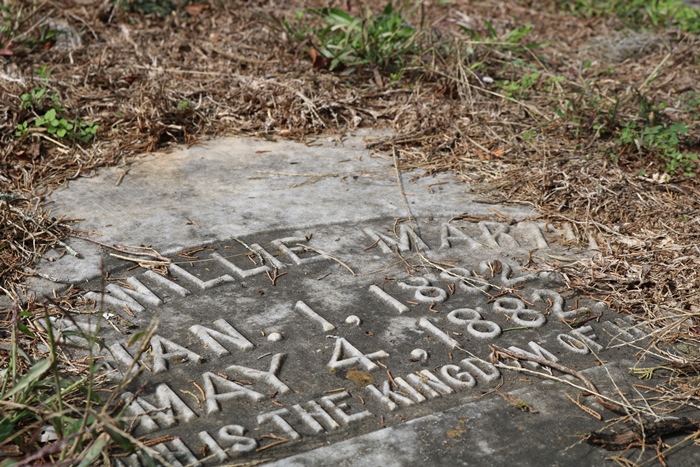
"April 22, 1897 Confederate monument to be unveiled."
Historical Figures
- Thomas W. Hardwick, Governor of Georgia, U.S. Senator and Representative
- William Rawlings, MD, World renowned surgeon
- Rev. J.D. Anthony, Saved Sandersville from burning by General Sherman on infamous March to the Sea
- Coleman R. Pringle, Father of Prohibition in Georgia
- Eight Sandersville Mayors
- John P. Brunson, Rebel Soldier, buried by ladies of Methodist Church (north-central portion)
War Dead
As the Old City Cemetery was begun as early as 1830 and the Revolutionary War began in 1776, it is possible that some Revolutionary War veterans buried here. A man in his twenties who fought in the war would have been about 63 years old in the 1830s. Although there is speculation that one of the brick crypts contains a Revolutionary War soldier, this rumor has not been, and may not be able to be, documented.
A marker is present in honor of David Greer. The date of his death is not given; however the marker says, "David Greer, Georgia, Dragoon, Willis Co., 3 Ga. Regt., War of 1812."
One veteran of the Spanish American War is interred. He was Maj. Loring R. Clayton.
At least 74 Confederate dead can be listed as resting in the Cemetery. There are probably more as one C.S.A. marble marker was placed on each lot where one or more Confederate veterans were interred, and these markers are commonly seen throughout the cemetery. It is said that Washington County furnished more soldiers to the Confederacy than any other county.
At least three World War I veterans are buried here, as can be seen by inscriptions on the grave of 1st Lt. Beverly Daniel Evans, Jr., in; and on the slab of Francis W. Birdsong which is inscribed, "Georgia, Lt. U.S. Navy, World War I, Dec. 17, 1894 - Oct. 28, 1968",; and Sidney Francis Brown's tomb on which is written 1st Lt., 27 Engineers, July 7, 1920,. One veteran of World War II is also to be found interred at the cemetery. He is Lt. Col. Edgar Leroy Roughton of the U.S. Air Force in lot 65.
Architecture
No early cemetery records exist. Only graves where inscribed markers were positively identified in 1961 by Washington County Historian, Elizabeth Pritchard Newsome, author of Washington County, Georgia, Tombstone Inscriptions are known.
No wooden headboards survive; however, upright fieldstones or "dornicks" still serve as markers for some graves in the older north-central section of the cemetery.
Federal Era Grave Markings
The oldest inscribed marker in the cemetery is a broken, dislocated headstone less than two inches thick which was cut from a poor grade of marble and bears the date 1831. The stone marked the grave of Reuben B. Barney and originally was located on an unnumbered lot in the north central portion.
Greek Revival Grave Markings
In nearly the center of the cemetery a Greek Revival mausoleum with Romanesque and Baroque influences is located on lots 79-82. The Brantley-Pringle Family Vault is dated 1878 and features a pair of Doric columns and an arched Romanesque doorway with exaggerated keystone and Baroque style pediment.
"Box tombs" are above ground tombs assembled from six slabs of marble and/or granite (2-3" thick) which form the bottom, sides and top of the structures. They reproduce the sarcophaguses used by the Greeks and Romans, with the exception that they are exposed, not located within other buildings. A most common trait of Greek Revival structures is strict symmetry used also in its classical antecedents in Greek and Roman cultures.
An even older type of above ground crypts are three brick structures in the north-central portion of the cemetery. These have or had, arched, or vaulted, tops instead of the flat tops of the box tombs. In architectural style, these are more nearly Romanesque-inspired structures because of their use of brick-work and the arch, but in Washington County most commonly date from the 1840s-1860s when many Greek Revival homes were being built. These arched, brick crypts are often found in family cemeteries associated with Greek Revival homes.
As there are no inscriptions on the three brick crypts at the Old City Cemetery, their occupants and the dates of these burials are unknown. The bricks that were used are soft and hand made which presumably dates these structures as preceding 1875 when commercially manufactured brick became readily available in Washington County.
Victorian Grave Markers
Many of the monuments in the Old City Cemetery are of Victorian design. Although Queen Victoria ruled between 1819 and 1901, Victorian architecture had a longer influence in cemeteries. No other period saw such an eclectic blend of different architectural elements and different styles of monuments. To this era may be attributed much of the statuary now seen in the cemetery as well as most of the cast iron fencing.
Notable examples of statuary include:
- Nearly life-size figure on the grave of Willie Bobbit Hall in lot 88.
- Angel on the grave of Jinny
- Cast metal statue and base on lot 47.
- Maid with garland of assorted flowers (Lot 141).
- Statue of a woman with wreath of flowers (Lot 69).
- Nannie Virginia Evans Monument, 1905 (Lot 131)
- Carved baby chair on which child's garment rests (Lot 131).
- Half-dozen other carved monuments with sculptured human and animal figures.
Modern
One of these exceptions is the monument erected to honor Governor of Georgia, Thomas William Hardwick (U.S. Senate and U.S. House of Representatives), who died in 1944. His grave has both a headstone and a granite slab.
An unusually elegant marble slab is found on the grave of Clayton Wood Robson (lot 114). This slab features carved oak leaves and acorns forming a bold design extending around the monument. Oak leaves represent immortality and acorns, the resurrection.
A fine grouping of Victorian cemetery monuments is found in lot 131. there is an ornately-carved shaft surmounted by a hand with finger pointed towards the heaven which was Gothic tracery marking the grave of Bessie Warthen. Two later monuments are a granite monolith on the grave of Lt. Beverly Daniel Evans, Jr., which is inscribed, "Born at Sandersville, Ga. Jan. 24, 1896. Killed in action at Battle of Meuse-Argonne France Nov. 1, 1918" and a granite shaft erected in 1951 on the grave of Emily Virginia Irwin. Although dating from a period almost 30 years after the height of Art Deco styling, this monument, in shape and in decoration, is strongly reminiscent of the Art Deco movement.
Obelisks, columns, draped columns, broken columns, and columns topped with stone
mortuary vases are also common Victorian monuments in the cemetery. One large obelisk is the Confederate monument in the central part of the cemetery, but there are several other examples of this Egyptian-derived grave marker.
Fences
Not only do a large percentage of the stone monuments in the cemetery reflect Victorian styling, but most of the cast and wrought-iron fencing around cemetery plots also show Victorian influences. There are ten lots in the cemetery that are fenced. No town fences have the same pattern, and six of the fences are of Victorian design.
The most ornate fence is around the unnumbered Youngblood lot across from lot 192. This cast-iron fence has a very ornate Gothic tracery design. A slightly less complex design is seen on lot 31 where most of the design consists of pointed ovals. Another cast iron fence which has some missing segments is on lot 185. This fence has a pineapple motif on top of its support posts. Wrought iron fences are found around lots 139-140, lot 83 and lot 15. While not as elaborate as the cast iron fences, they are delightful pieces of work. The fence around the Pringle Mausoleum probably postdates the 1878 mausoleum. A modern iron fence, probably dating from the 1940s or later, is around lot 114.
Greek Revival
As more or less a backlash against the extreme ornate ness of Victorian monuments, there was a return to Classical styling between about 1900 and mid-1920s. Turning again to the Evans lot for example (lot 131), there is the marker of Beverly Daniel Evans, Sr., which dates from 1922. This monument has square Ionic-inspired columns and perfect symmetry compared to the non-symmetrical Victorian monuments in the same lot.
With some exceptions, the erection of large monuments ceased in the cemetery by the 1930s. After this date people were mostly remembered by flat-lying marble or granite slabs which overlie the graves and/or joint headstones for man and wife.
Modes of Interment
Different burial modes at the cemetery include aboveground burials (Pringle Mausoleum), brick crypts, and box tombs. Burials below the ground surface include unmarked and primitively marked graves where wooden coffins were used. Some of these burial sites are now marked only by brick outlines or depressions in the ground. Vaults buried below the ground, first made of brick and then later of concrete, holding metal coffins were introduced before the Civil War and remain the most common type of burial today.
